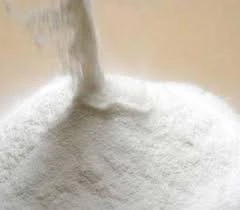
Δεκ . 30, 2024 09:23 Back to list
Safety Data Sheet Overview for Hydroxyethyl Cellulose and Its Applications
Hydroxyethyl Cellulose (HEC) Safety Data Sheet Overview
Hydroxyethyl cellulose (HEC) is a non-ionic, water-soluble polymer that has gained significant importance in various industries, including pharmaceuticals, cosmetics, and construction. This versatile compound serves as a thickening agent, stabilizer, and film-forming agent, making it a valuable ingredient in a plethora of formulations. Understanding the safety data sheet (SDS) for HEC is essential for manufacturers, formulators, and end-users to ensure safe handling and usage.
Chemical Properties
HEC is derived from cellulose, a natural polymer found in the cell walls of plants. The hydroxyl groups in cellulose are etherified with ethylene oxide, which enhances its solubility in water and alters its viscosity. The specific properties of HEC can vary based on its molecular weight and the degree of substitution, affecting its performance in different applications.
Uses and Applications
HEC is widely used in several applications due to its unique properties. In the pharmaceutical industry, it acts as a binder in tablets and a thickening agent in gels and ointments. In cosmetics, it helps to stabilize emulsions and improve the texture of creams and lotions. In construction, HEC is utilized as a thickener and water-retention agent in cement-based products, improving workability and preventing cracking.
Safety Considerations
The Safety Data Sheet (SDS) for hydroxyethyl cellulose provides critical information regarding safety, handling, storage, and emergency measures. Here are key aspects often included in HEC SDS
1. Hazard Identification HEC is generally considered safe for use in various applications. However, potential hazards can include skin irritation or respiratory issues for individuals sensitive to dust inhalation. It's essential to wear appropriate personal protective equipment (PPE), such as gloves and masks, when handling dry HEC powder.
hydroxyethyl cellulose sds

3. First Aid Measures The SDS outlines steps to take in case of exposure. For instance, if HEC comes into contact with eyes, flush with water for at least 15 minutes. If ingested, seek medical attention, but it is generally considered low toxicity.
4. Fire Fighting Measures HEC is not flammable; however, in case of a fire, appropriate extinguishing agents should be used. Understanding its behavior during combustion is crucial for effective fire management strategies.
5. Accidental Release Measures In the case of spills, it is advised to use dry methods to contain and collect the material. Inclusion of proper disposal methods is crucial to prevent environmental contamination.
6. Handling and Storage The SDS emphasizes safe handling practices, recommending that HEC should be stored in a cool, dry place away from strong oxidizing agents. Proper ventilation is essential to minimize dust accumulation.
7. Exposure Controls/Personal Protection The recommended exposure limits and necessary PPE are typically outlined in this section. Utilizing respiratory protection and ensuring adequate ventilation when working with HEC dust are vital measures.
8. Stability and Reactivity HEC is stable under normal conditions. It is essential to keep HEC away from strong acids, bases, and oxidizing agents as they can lead to degradation.
9. Toxicological Information HEC is not considered a carcinogen or mutagen and is regarded as safe in typical concentrations found in consumer products. However, individual sensitivity may vary.
Conclusion
Hydroxyethyl cellulose is a versatile polymer with extensive applications across various industries, making it a crucial component in many formulations. Understanding the safety data sheet for HEC not only ensures compliance with regulatory standards but also encourages safe practices in handling and usage. By familiarizing themselves with the information provided in the SDS, all stakeholders—from manufacturers to end-users—can contribute to a safer working environment and optimal product performance. With continued advancements in research and application, HEC remains a vital ingredient in driving innovation within its diverse fields. Always refer to the latest SDS for the most current and comprehensive safety guidelines.
-
Versatile Hpmc Uses in Different Industries
NewsJun.19,2025
-
Redispersible Powder's Role in Enhancing Durability of Construction Products
NewsJun.19,2025
-
Hydroxyethyl Cellulose Applications Driving Green Industrial Processes
NewsJun.19,2025
-
Exploring Different Redispersible Polymer Powder
NewsJun.19,2025
-
Choosing the Right Mortar Bonding Agent
NewsJun.19,2025
-
Applications and Significance of China Hpmc in Modern Industries
NewsJun.19,2025







